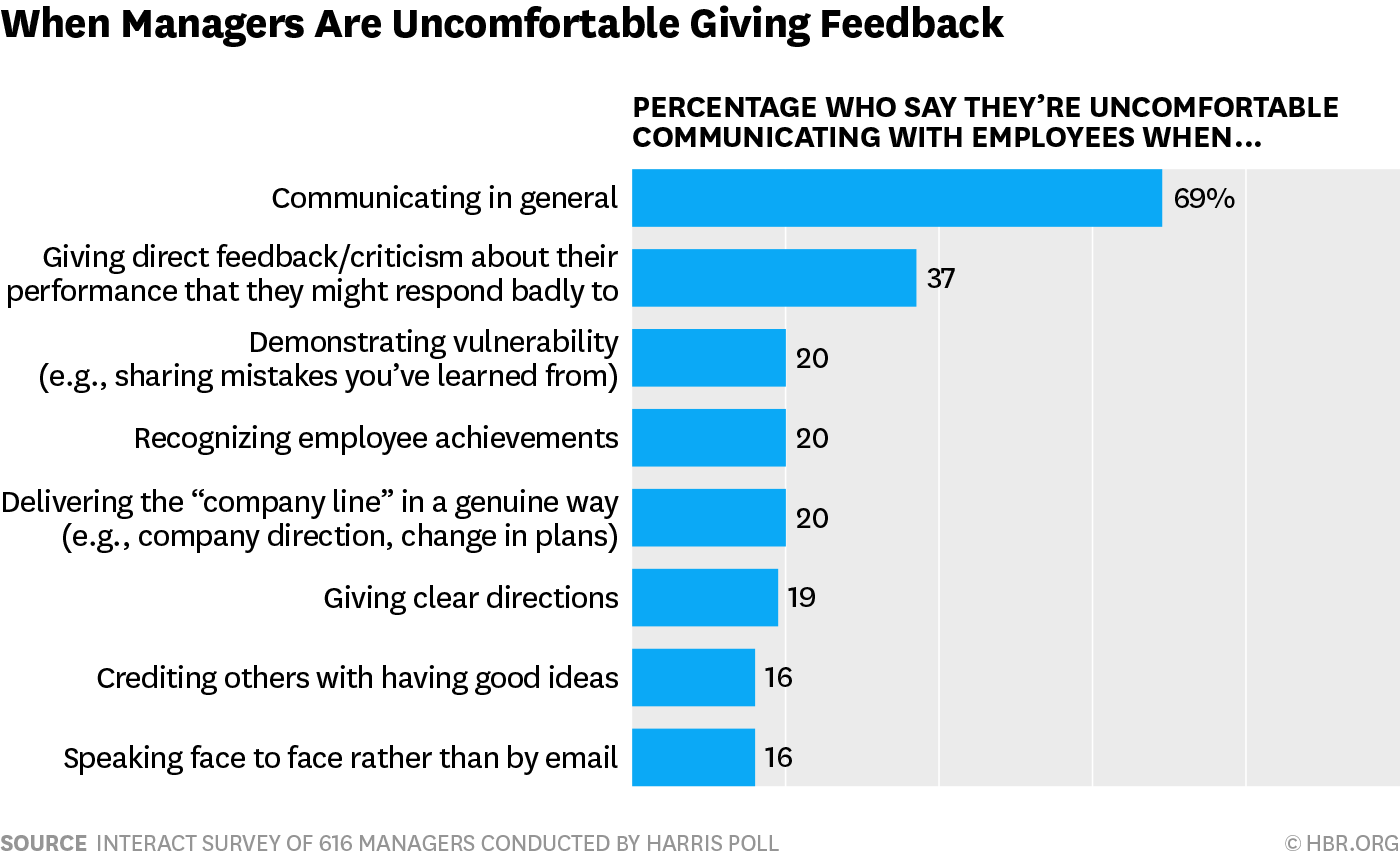Managing by walking around
Learn what managing by walking around means. Discover its aim, pros and cons, and examples. Learn how to implement MBWA successfully.

To effectively manage a team, you must understand how they operate.
In this piece, you will learn:
- What does it mean to manage by walking around?
- The aim of management by walking around
- Management by walking around examples
- History of management by walking around
- Pros of management by walking around
- Cons of management by walking around
- How to implement MBWA successfully
What does it mean to manage by walking around?
Managing by walking around is a strategy where managers leave their desks and walk around the workplace to understand employees and their ongoing work better. It requires a random or unstructured schedule such that staff is not expecting a check-in at a pre-approved time, and managers get a real sample of what is going on.
This management style is also referred to as management by wandering around or abbreviated to MBWA.
Implementing MBWA leads to unplanned employee interactions where managers gain new information. This could be about:
- Issues
- Routines
- Customers
- Equipment
- Workflows
- Or many other aspects of business operations.
Managers that keep themselves to their office limit the information they receive and how it gets to them. They have to wait for employees to proactively come to them or learn through status reports and staff meetings.
By creating spontaneous interactions and randomly sampling the work employees perform, MBWA better reflects the workplace for the people overseeing it. Plus, managers make themselves available to staff in a more informal setting, allowing them to ask questions directly.
While this technique may sound time-consuming or too unstructured, when implemented correctly by managers with the required skill set, it can add real value.
Regular MBWA allows teams to share new ideas, overcome problems or sub-standard practices, and boost productivity. It also creates a better relationship between management and employees, improving communication and enhancing trust.
The specifics of implementing MBWA vary depending on the organization – its layout, workplace setting, and routine. Walking around in an office is different to:
- Visiting a factory floor where there are potential safety concerns
- Wandering around a store where staff has constant customer interactions.
However, the goal remains the same to create unplanned employee interactions and better understand operations.
Making MBWA successful requires leaders with significant emotional intelligence and a range of people skills such as active listening, recognition, observation, appraisal, and the ability to build rapport with staff naturally. Managers wanting to implement MBWA must have inherently good communication skills or look towards developing them.

Career development plan template
This template helps employees and leaders plan together for career growth: set goals, assess skills, and make a plan.
Download nowThe aim of management by walking around
The aim of management by walking around is to understand the workforce better and learn how the team is operating first-hand. MBWA aims to bring managers and employees together, breaking down boundaries, improving communication, and giving leaders an accurate picture of daily operations. This produces better-informed decision-making as well as greater productivity and employee morale.
The relationship between leadership and employees is a problem for many organizations. A survey by Harris Poll in 2016 showcased the communication breakdown between managers and their workforce. 69% of managers state they’re uncomfortable communicating in general with their staff, and 37% struggle to provide feedback that employees may respond poorly to.

Source: hbr.org
MBWA can help managers better communicate with their employees and build a rapport that improves the work environment for everyone involved.
Research shows 82% of employees have ideas to improve operations, but 18% of these ideas are never heard due to staff being afraid to share. Organizations need to improve communication channels to make the workforce comfortable enough to come forward with new ideas. The spontaneous informal encounters created by MBWA can become just that, sparking innovation that affects the team’s overall performance.
While the focus is on listening and managers learning new information, MBWA is a two-way process. Leaders can offer helpful information, guide employees through specific tasks, reinforce company values, or offer immediate feedback and recognition. They can even problem-solve in real-time and remedy issues that otherwise could cause delays.
Managers are tasked with overseeing a large number of employees and getting the most out of them. Businesses can install feedback processes and communication channels, invest in analytics, and develop KPIs to measure performance, but do these really get them closer to understanding their workforce?
MBWA aims to bridge the gap between leadership and employees by having them interact naturally while the work is going on. It helps managers sample genuine day-to-day operations by talking face-to-face to the people doing the work.
Management by walking around examples
Examples of management by walking around could be as simple as:
- Helpful advice with how to deal with a customer or issue
- Connecting an employee with their counterpart in a different department to remedy a problem
- Discovering faulty equipment that needs replacing
- Learning about a new bottleneck potentially delaying a deadline
- Assessing employee morale
Direct contact with employees can lead to managers learning different types of information that may otherwise not make it to them at their desks.
MBWA is a popular management style in use at successful companies.
Former Starbucks CEO Howard Schultz would reportedly take time to visit stores every week to discover how they were operating and hold discussions with staff to emphasize company values.
History of management by walking around
While management by walking around has been around for a long time, the phrase itself was popularized in the 1980s. Consultants Tom Peters and Robert Waterman explored the idea in their 1982 book, In Search of Excellence: Lessons from America’s Best-Run Companies.
The book studied successful companies and found they often had CEOs and managers who spent more time in the field than remaining in the office. In addition, these companies had leadership teams that were more connected to wider business operations and better suited to solving problems.
MBWA had always been a popular approach for William Hewlett and David Packard, the founders of HP. The technique gained further traction when they highlighted the idea in The HP Way. The management style has gone on to be adopted by high-profile companies, including Disney, Apple, and Toyota.
Pros of management by walking around
1. Communication
With management by walking around, team leaders learn to communicate directly with their employees and hopefully develop a better relationship through natural, relaxed, and informal conversations.
It helps managers expand their communication expertise and pick up new skills such as active listening. Plus, enhanced communication creates a more open work environment where staff are free to offer new ideas.
2. New perspective
By interacting with the staff on the frontline of the organization while they are working, managers gain a new perspective on business operations. They hear first-hand experiences from a range of employees to understand what is going on and develop a clearer picture of the strengths and weaknesses of the organization.
It is common for leadership to be stuck inside a “management bubble.” They understand the business from reports and updates rather than the actual people doing the work. This can distort their perception and play into confirmation bias. MBWA helps burst this bubble and show management a more accurate representation of their business.
3. Problem-solving
Meeting staff face-to-face can allow managers to quickly solve issues rather than going through the time-consuming procedures and having to read through a chain of emails. For example, perhaps a minor problem commonly occurs with a piece of equipment or during a particular work process.
As a result of MBWA, managers can quickly understand the severity of a problem and work to accelerate its solution.
4. Innovation
Creating spontaneous communication channels helps solve problems, but it also allows for exchanging new ideas to boost creativity and innovation. This works both ways:
- the manager can impart institutional knowledge to improve workflows and empower employees to try new approaches
- the staff can offer new ideas to improve productivity and enhance operations.

Build a learning culture: a practical workbook for your organization
Upgrade your organization’s learning culture with clear, actionable strategies to address the challenges.
Download workbook5. Instant feedback
Employee feedback is a great way to remove sub-standard practices and positively reinforce behavior management wants. MBWA can transform employee feedback from a gradual process filtering up to leadership to an instant in-person interaction.
Plus, employees don’t have to wait for the right time to bring something up. Instead, the manager has set aside time specifically to wander the workplace and hear feedback from their team.
6. Morale
Listening to staff and working to understand their perspective shows that management cares about their opinion and value them as people.
Treating staff right making them feel part of an organization helps boost morale and generate engagement. This can reduce employee turnover and help companies hold on to valuable team members.
7. Productivity
When implemented correctly, the benefits of MBWA lead to better organizational efficiency and greater productivity. In addition, it helps identify areas for improvement and generates a positive work environment for both management and employees.
8. Demonstrate company values
Finally, MBWA can be used to instill company values across the workforce. Managers can lead by example, demonstrate core values, and guide staff to make decisions with them in mind.
Cons of management by walking around
1. Time-consuming
Management by walking around is a time-consuming task that places a significant burden on leaders who have a lot to deal with already.
This problem is exacerbated by the fact that there is no way of knowing the value of a given MBWA session beforehand. The very nature of it is to be unplanned.
Sometimes it may yield significant benefits, other times, little can come from it, and the manager has taken time away from other vital tasks.
2. Micromanagement
It is easy for MBWA to tip over into micromanagement and for employees to feel under additional pressure or like they are being watched.
This is especially true if the manager comes across as forceful or uses poor questioning to sound like they are blaming or exposing staff for errors.
In these instances, MBWA loses its benefits and can also become a net negative on the workforce.
3. Over-emphasis on specific opinions
When done right, randomly sampling employees at random times of the day can be an excellent way to develop a clear picture of the team as a whole. However, it can also lead to managers over-emphasizing specific viewpoints.
MBWA works best when leaders take in a wide range of opinions instead of focusing on one or two that may not accurately represent the wider workforce.
MBWA can also result in tunneling on employee opinions over the customer or stakeholders.
4. Implementation
Ultimately, MBWA’s success comes down to its implementation and the managers’ specific skillset.
It is easy for the technique to dissolve into inefficiently wandering the workplace engaging in unhelpful dialogues that don’t provide value to either employee or manager.
The aim is always to yield helpful information that management can act on to improve operations.
Also, the conversations can become distracting for employees, taking their attention away from essential tasks they were in the middle of working on.
There are plenty of pitfalls when implementing MBWA. To be successful, you need managers with compatible interpersonal skills who can effectively support, coach, and empower employees.

L&D strategy framework
You will receive a list of questions along with a spreadsheet template to help you analyse your L&D strategy.
DOWNLOAD FRAMEWORKHow to implement MBWA successfully
Tip #1 – Scheduling Spontaneity
Scheduling when the manager walks around the workplace is a challenge.
It is hard for management by walking around to become a serious leadership technique if it is only performed when the manager finds time. However, it cannot become a structured part of the manager’s routine and predictable to employees.
The whole point of MBWA is to get an accurate impression of how a team works. For example, if it happens every Wednesday afternoon, employees will begin to prepare for it, and the manager is no longer observing the actual goings-on.
Implementing MBWA requires flexible scheduling such that it is accounted for in the manager’s calendar without becoming part of a set routine.
It is also good to plan where the manager is visiting for a given time slot. It helps ensure coverage and areas where pain points commonly occur get the attention they deserve.
Tip #2 – Conversation topics
The conversations produced are the key to MBWA’s success.
Managers must find the right balance in the topics they discuss and the style of questioning they use.
You want to probe and trigger informative discussions and not come across as accusatory or constantly correcting employees. It can be helpful to expand conversations beyond work and get to know employees and what makes them tick.
Learning about them outside of work, understanding any significant life events they may be going through, and building a rapport allows you to relate to them as people.
However, the goal should always be on the work and discovering information to make the technique worthwhile.
Topics of conversation to aim for include:
- Work status
- Potential problems
- How they are working with others in the team
- Do they feel heard
- Coaching and imparting knowledge that may help them in their job
- New ideas for the team
- Company values
So how do you direct conversations to these topics naturally, in a way that doesn’t come across as micromanaging or prying too closely?
You can try general probing questions such as:
- What are you working on?
- What are you currently excited by?
- What’s on your mind?
- How can I help?
- Where do you think we as a company can improve?
- What’s the biggest challenge for project X?
Tip #3 – Listen and observe
While MBWA allows leadership to impart knowledge to their employees quickly, it should primarily be a learning exercise.
The critical skills are listening and observing staff to see how they operate and to find the potential changes required to get the most out of them.
Ensure each conversation has your undivided attention, and you are actively listening to employees’ opinions, thoughts, and ideas.
Seeing that you are interested makes them more likely to open up and be honest in their answers.
Tip #4 – Develop employee networks
MBWA is useful for getting to know employees better and developing networks advantageous to your organization’s future.
As you incorporate direct employee interactions into your management style more, the better your relationship with the team will become. This also helps tailor coaching and discussions for each staff member to ensure they get the most out of your interactions.
Getting to know individual staff members also leads to talent discovery. You may identify people with leadership potential who require new leadership development plans so that one day they may be in your shoes, wandering the office learning about their own team.
Tip #5 – Employee recognition
Recognition is vital to a successful business. Letting employees know they have performed well is a great way to reinforce the behaviors you are looking for.
While walking around the workplace, try to focus on the positives and publicly praise employees. This helps boost motivation, morale, and engagement.
Skewing negative while implementing MBWA can lead to staff dreading their interactions with you. The technique should be seen as a learning experience, not an inquisition or interrogation.
Be sure to spread positive recognition around the organization wherever you find praiseworthy work. You also don’t want to focus too heavily on specific people or groups, making others feel like you are playing favorites.

L&D strategy framework
You will receive a list of questions along with a spreadsheet template to help you analyse your L&D strategy.
DOWNLOAD FRAMEWORK



